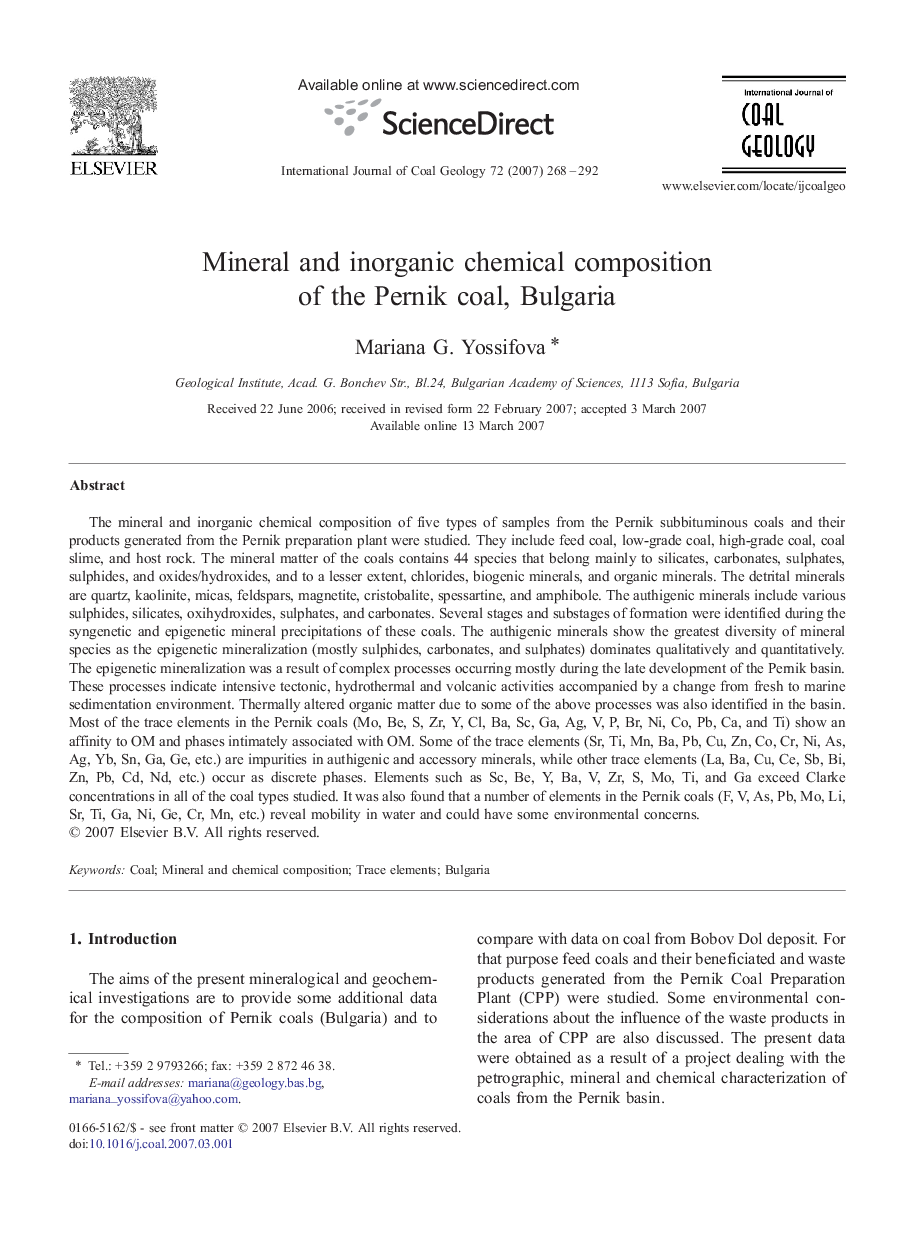| Article ID | Journal | Published Year | Pages | File Type |
|---|---|---|---|---|
| 1754288 | International Journal of Coal Geology | 2007 | 25 Pages |
The mineral and inorganic chemical composition of five types of samples from the Pernik subbituminous coals and their products generated from the Pernik preparation plant were studied. They include feed coal, low-grade coal, high-grade coal, coal slime, and host rock. The mineral matter of the coals contains 44 species that belong mainly to silicates, carbonates, sulphates, sulphides, and oxides/hydroxides, and to a lesser extent, chlorides, biogenic minerals, and organic minerals. The detrital minerals are quartz, kaolinite, micas, feldspars, magnetite, cristobalite, spessartine, and amphibole. The authigenic minerals include various sulphides, silicates, oxihydroxides, sulphates, and carbonates. Several stages and substages of formation were identified during the syngenetic and epigenetic mineral precipitations of these coals. The authigenic minerals show the greatest diversity of mineral species as the epigenetic mineralization (mostly sulphides, carbonates, and sulphates) dominates qualitatively and quantitatively. The epigenetic mineralization was a result of complex processes occurring mostly during the late development of the Pernik basin. These processes indicate intensive tectonic, hydrothermal and volcanic activities accompanied by a change from fresh to marine sedimentation environment. Thermally altered organic matter due to some of the above processes was also identified in the basin. Most of the trace elements in the Pernik coals (Mo, Be, S, Zr, Y, Cl, Ba, Sc, Ga, Ag, V, P, Br, Ni, Co, Pb, Ca, and Ti) show an affinity to OM and phases intimately associated with OM. Some of the trace elements (Sr, Ti, Mn, Ba, Pb, Cu, Zn, Co, Cr, Ni, As, Ag, Yb, Sn, Ga, Ge, etc.) are impurities in authigenic and accessory minerals, while other trace elements (La, Ba, Cu, Ce, Sb, Bi, Zn, Pb, Cd, Nd, etc.) occur as discrete phases. Elements such as Sc, Be, Y, Ba, V, Zr, S, Mo, Ti, and Ga exceed Clarke concentrations in all of the coal types studied. It was also found that a number of elements in the Pernik coals (F, V, As, Pb, Mo, Li, Sr, Ti, Ga, Ni, Ge, Cr, Mn, etc.) reveal mobility in water and could have some environmental concerns.
